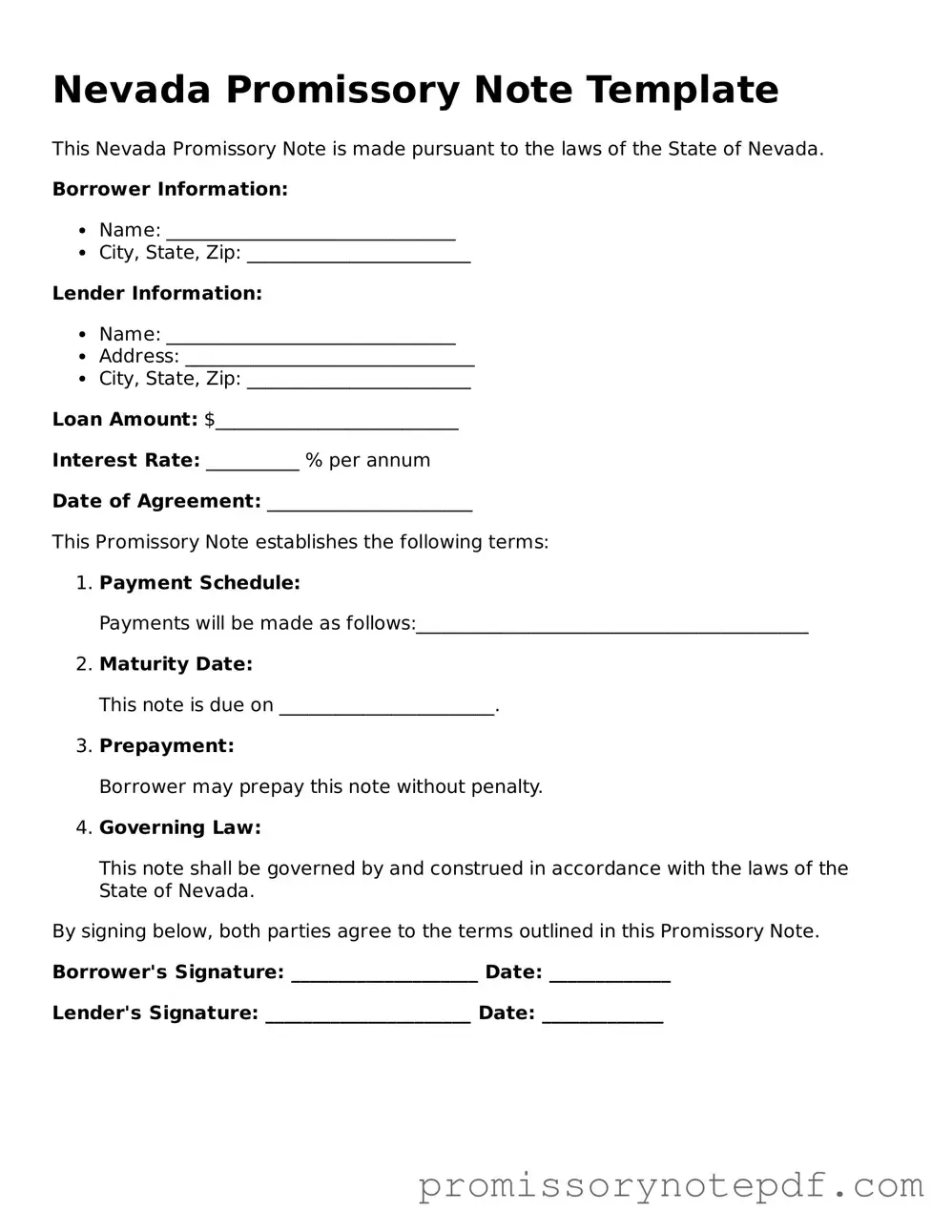The Nevada Promissory Note shares similarities with a Loan Agreement. Both documents outline the terms of a loan, including the amount borrowed, interest rate, and repayment schedule. A Loan Agreement typically includes more detailed provisions regarding the obligations of both parties, whereas a Promissory Note focuses primarily on the borrower's promise to repay the loan. This makes the Loan Agreement more comprehensive, but the Promissory Note serves as a simpler, straightforward acknowledgment of debt.
Another document that resembles the Nevada Promissory Note is the Mortgage. While a Promissory Note is a promise to pay back borrowed money, a Mortgage secures that promise with real property. If the borrower fails to repay the loan, the lender can take possession of the property through foreclosure. Both documents are essential in real estate transactions, but the Mortgage provides additional security for the lender by tying the loan to the borrower's property.
A Credit Agreement is also similar to a Promissory Note. Like the Promissory Note, a Credit Agreement outlines the terms of borrowing, including limits on the amount of credit available and the interest rates applicable. However, Credit Agreements are often used in revolving credit situations, such as credit cards or lines of credit, where the borrower can withdraw and repay funds multiple times. In contrast, a Promissory Note typically pertains to a single loan transaction.
The Secured Note is another document akin to the Nevada Promissory Note. It differs primarily in that it is backed by collateral, which provides additional security for the lender. In the event of default, the lender has the right to seize the collateral to recover the owed amount. Both documents detail the borrower's commitment to repay the loan, but the Secured Note adds a layer of protection for the lender through the collateral arrangement.
A Demand Note is similar to the Promissory Note but includes a crucial difference: it allows the lender to demand repayment at any time. While a standard Promissory Note specifies a repayment schedule, a Demand Note offers flexibility for the lender to call in the debt whenever they choose. This can create a more precarious situation for the borrower, as they must be prepared to repay the loan on short notice.
The Installment Note is another document that shares characteristics with the Nevada Promissory Note. Both documents outline a borrower's obligation to repay a loan, but an Installment Note specifies that payments will be made in regular installments over a set period. This structure contrasts with a Promissory Note, which may or may not include a defined repayment schedule. The Installment Note provides clarity on payment expectations, making it easier for borrowers to manage their finances.
Lastly, a Subordination Agreement can be compared to the Nevada Promissory Note in terms of establishing priorities among creditors. While the Promissory Note signifies a borrower's promise to repay a specific lender, a Subordination Agreement outlines the order in which multiple lenders will be paid in the event of a default. This document is crucial in complex financing situations, as it clarifies the hierarchy of claims and ensures that all parties understand their rights and obligations in relation to the debt.
